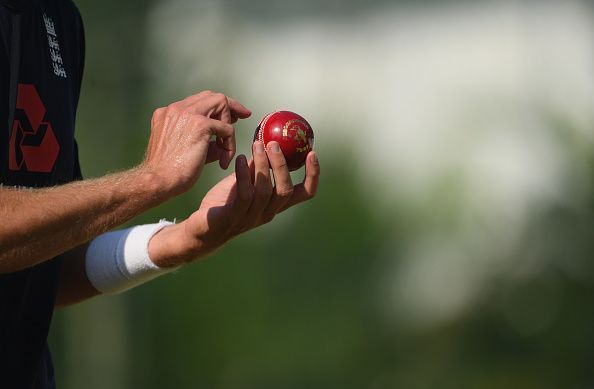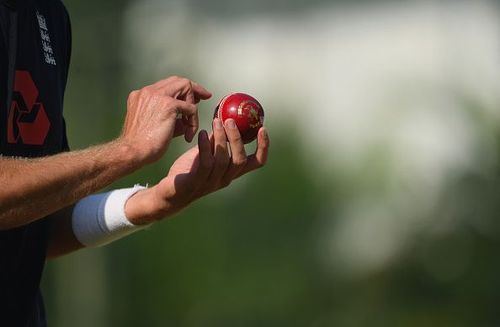
ICC World Test Championship 2019-21: Cricket and the quest for standardization

1st May 2019. Camp Nou. UEFA Champions League Semifinal Leg 1.
Barcelona 3 - 0 Liverpool
7th May 2019. Anfield. UEFA Champions League Semifinal Leg 2.
Liverpool 4 - 0 Barcelona
A jaw-dropping turnaround within the space of one week.
It might be heresy to begin a piece on cricket with references from football. But even for a cricket fan, who experiences the ‘beautiful game’ tangentially at best, the home-away dichotomy is fascinating - something any fan of the sport would attest to adding a substantial measure of excitement to footballing rivalries. And what would be cricket without its own rivalries?
When we speak of home-away challenges in cricket, we invariably mean the red-ball game, be it the seasonal duels in County Cricket or the Ashes. It is a more prudent area for football experts to deliberate on what really counts as home advantage in football other than fanatical support for the host team and if it can be so decisive a factor in explaining the swing in fortunes in the Champions League semifinal. However, the fact that cricket is so dependent on the environment offers a ready accounting for why certain bilateral rivalries have blossomed and survived to this day.
After the Cup, come the big leagues
The upcoming Cricket World Cup is not going to be remarkable just for its format (and hopefully for the quality of the game-play once it is underway), but also because it serves as the watershed event that ushers in the next era in the history of global cricketing competition.
Almost immediately as the tournament is concluded, the first edition of the now triennial ICC Test Championship is slated to commence with the Indian tour of West Indies, and the three-tier Cricket World Cup League is to follow soon after. Division Two and Challenge League start in 2019, while Super League kicks off in the next calendar year with the full members and the Netherlands in the lot.
What this invariably means is all top-tier international cricket in the longer versions (T20Is will not be affected) will be aimed at the acquisition and defense of world supremacy, in a way more definitive than ranking leader-boards ever were. Recognizing the stakes, the World Committee of the Marylebone Cricket Club has recommended the use of a standardized ball for all Test matches for a ‘fair’ assessment of skills of the contenders and fortify the legitimacy of the no. 1 spot determined by the revamped format.
The case against standardization
Not unsurprisingly, the suggestion has not been universally well-received in the cricketing community. Sunil Gavaskar, in particular, lambasted it, emphasizing on the diversity of balls used in different parts of the world as adding to the environmental challenges that are crucial to the experience of Test cricket. With due respect to the intentions of the MCC here, the traditionalist anxieties around the recommendation are not unfounded.
Loads have been spoken and written about the differences in behavior between the Kookaburra, Dukes and SG balls, and their relative sensitivity to and longevity in different conditions. To be fair to the MCC’s suggestion, it was expressed with the view of maintaining the contest between the ball and the bat, which in the modern game is increasingly perceived to have tilted towards the latter. The promise of uniformity is tempting, offering all teams a level playing field, especially when a single edition of the Championship does not see the teams matching up against all their competitors.
If standardizing the circumstantial factors of cricket could indeed guarantee “the balance between bat and ball”, where does it stop? Even if the MCC accepts the view that no one ball, irrespective of its brand, behaves or endures similarly across the variety in soil, a case could be made for standardizing drop-in pitches to further lessen the deviation from the mean.
If the International Cricket Council adopts MCC's stand, it would be abandoning the element of diversity as a defining principle of the sport, and open a can of worms that can go the field hockey way, ushering in a reality where the standard cricket field might consist of a particular type of soil (if not concrete) for the pitch and synthetic turf for the outfield.
Michael J. Sandel, in his book “The Case against Perfection: Ethics in the Age of Genetic Engineering”, argued that “giftedness” trumps “effort” as the core value in the experience of sport. Sport is entertaining because of its persistent randomness, which inspires awe by beating deterministic predictions time and again.
The beauty of cricket lies in the complex mix of talent, practice, and luck that influence what happens on the field. In a recent paper, this author had mused: “What sets cricket apart from other ball games is the variety environmental challenges offer – the state of weather, the texture of the soil, the health of the grass, the leather of the ball, the spikes on the player’s shoes, and so on.”
If the rationale behind standardizing the ball is achieving a laboratory-like controlled environment for play, it sacrifices the unpredictability that sustains the excitement apprehending every reboot in bilateral rivalries, which the international cricketing calendar is overwhelmingly composed of.
Imagine the paralyzing despair that would run through the supporters of a particular team after getting bashed on an overseas tour. Based on the results in the recent face-offs, in the near future at least, there would be little to hope for in a return leg of the rivalry. Uniformity so achieved would be more likely to make the game predictable and greatly erode the sense of anticipation that cricket thrives on.
“Different ball game”
Cricket – more particularly, red-ball cricket – is perhaps the only game which can literally and legitimately employ the euphemism of being a “different ball game”. It is difficult to think of any other sport (barring intermittent speculations cropping up around almost every FIFA World Cup official ball) where technical discourse factors in the manufacturer brand of the ball to be used in any particular instance.
Apart from the environmental conditions, the measure of challenges that the particular ball used in any match brings in, adds to the demanding set of skills that separates the best in the game from the rest. The antics of the red Dukes in England have been difficult to contend with by batsmen, bowlers and wicket-keepers alike. But these quirks have by and large been accepted as part and parcel of the game.
Virat Kohli, for example, found a way in last year’s English tour to contend with the doubts that the Kookaburra, or the SG for that matter, had never bothered him with. A year after India’s worst rout in Sri Lanka, Muttiah Muralitharan, the most successful spinner in the history of Test cricket and one of the wreckers-in-chief in that series, conceded in an interview that he found SG balls the toughest to bowl with. He was not being unduly modest, as the contrasting returns on Sri Lanka's tour of India a few months later, would confirm. But, he also recognized such hardships as integral to the game: “you have to adjust”.
A prospective monopoly for Kookaburra
If an appeal to such abstractions of cricket’s traditional ethos is not persuasive, the economics of it might be. Even if standardization "could be a boost favouring economies of scale in manufacturing”, it could lead to monopolization of the ball market, howsoever brief it might be at a time.
Settling on a single brand of balls for the Test Championship would compel cricket boards across the world to seek supplies for all levels of cricket from a single manufacturer. This would also place financially weaker boards at a disadvantage in their bargains with the supplier. It is safe to assume that currently, Kookaburra - a brand that has come under fire as the producer of the most inert of balls, with their machine-sewn units as against the hand-sewn Dukes and SG, would be best placed to cater to such voluminous demand.
This is exactly what happened with the shorter formats. Despite the fact that the ICC does not mandate a standard ball for ODIs and T20Is, the adoption of the white Kookaburra by the governing body of the sport as the official ball for ICC tournaments has forced the hands of member boards to universalize it, since all limited overs cricket, domestic or international, is seen in the ultimate analysis as preparation for the next edition of the World Cup, or World Twenty20, as the case may be.
Attempts to contextualize bilateral rivalries in ODIs in the form of the Cricket World Cup League would only further entrench this monotony, since the league is designed as a direct feeder program for the next World Cup, even at a time when the England and Wales Cricket Board and the Board of Control for Cricket in India have been testing white Dukes and SG balls, respectively, in their domestic circuits with appreciable success in terms of potency as well as endurance.
The Test Championship still has the option to avoid this trap. Drawing from the above discussion, though, one may wonder if it would not have been fairer to have a two-leg final instead of a single encounter at a potentially neutral venue (that is, if England do not qualify for the showdown in June 2021). It is reasonable to expect that the concerned cricket boards would have sufficient time to make sufficient arrangements for the finale, after the league stage gets over by February 2021.
The MCC, which is also the primary legislative body for the laws of cricket, has had the ICC’s ears since the very beginning. Every opinion it expresses on the sport carries weight. But, in this instance, it seems to have dug up a problem where there exists none.